“Congratulations, you’re hired,” you say to the applicant. You set the date for the new person to begin working, and everyone is hopeful and excited. Now what?
Most employers realize how important it is to have an established process for hiring someone, and thus, it is done with thought and care. However, most employers do not put the same thought and care into the process of successfully onboarding and integrating the new hire. Too often, this is an after-thought (or no thought) – the person is thrown into the job, and it’s sink or swim!
When this is the established protocol for businesses, it is no wonder that employers find themselves frustrated when, months later, it is not working out. If/when they reach out to us for advice on termination or ways to “fix it,” we ask questions like: have you communicated your expectations? Have you issued your policy manual or job description? Did you train them on x, y, or z? Did you have any team communication sessions? What kind of onboarding did you do? The answers here are usually slim at best and no response at worst.
The real question becomes this: how can an employer expect long-term retention, hiring success, and employee engagement when doing little to nothing to help with the process? How do employers ensure an effective transition onto the team that will support high engagement and long-term retention? How do employers ensure that they will really get the return on the investment that they are hoping for?
A failure to pay attention to these questions contributes to increased turnover. When that happens, the employer will have the financial and emotional toll to show for their investment.
Today, employers cannot afford just to hire anyone and hope for the best. Employers need to increase the odds that their new hires will succeed and be a great fit for the team, which brings us to the process of onboarding and engaging employees.
Some of you may be thinking, “I have an orientation program. I’m good.” Truly effective onboarding programs are more than your basic orientation program that lasts for a couple of hours. This is not about completing that stack of paperwork, showing them the restroom, sharing a few rules, and then moving on. It is more than that. It should engage many parts of the organization and may last as much as a year after the individual is hired.
Onboarding Design
If you haven’t developed a well-thought-out program before the employee is hired, you’ve already lost the battle. As with any successful process, you’ve got to plan it out in advance and consider what is needed for something to turn out well. Any employee will notice when you’re “winging it” or are scattered with what to do and when.
According to Talya Bauer, Ph.D. and author of Onboarding New Employees: Maximizing Success, there are four distinct levels of onboarding, listed here in order of effectiveness (least to most):
- Compliance. New employees learn about legal and policy-related issues.
- Clarification. Ensures that new employees understand their new role along with the related expectations.
- Culture. Exposes new hires to the organizational values and norms.
- Connection. Connects new hires to personal relationships and information networks.
A good way to start the design process is to determine what objectives you have for the program. Think about things like what is critical for the new person to know about the organization. Their role? Their job? The culture? These objectives can help create the program structure and content.
Enlisting others in the organization is also important to facilitate the onboarding process. This can be done a variety of ways. For example, other people within the organization can play a role in creating the onboarding program – what should the program involve? Who should be involved? Key people within the organization can be part of the onboarding process by being subject matter experts and presenting training programs. They could also become mentors or coaches to ensure employees get the tools and resources they need to become successful.
If you have access to automation tools, consider using them if it makes sense. Automation should not overrule the human component, but it can be used to streamline other areas of the onboarding program. For example, a method in which completing new hire paperwork and reading the policy manual is done online can be easier and better than handing someone a stack of paperwork to complete.
Finally, make the onboarding program long enough to be meaningful and consider having different onboarding programs for different positions. Some positions are key and may require a longer program, whereas others do not. Ask participants for feedback and look for ways to make improvements as needed.
Keeping Employees Engaged
A quality onboarding program should result in immediate engagement from the new hire. A good way to keep that momentum going is to facilitate ongoing conversations with the employee. These conversations can keep employees on track with their progress as well as identify problems, or stumbling blocks, early on, which can be quickly removed or solved. In an article by Paul Falcone with the Society for Human Resources Management (SHRM), he suggests some of the following questions:
30-Day 1-on-1 Follow-up questions
- What do you like about the job and the organization so far?
- What’s been going well? What are the highlights of your experiences so far? Why?
- Tell me what you don’t understand about your job or about our organization now that you’ve had a month to roll up your sleeves and dive in.
60-Day 1-on-1 Follow-up questions
- Do you have enough, too much, or too little time to do your work? Likewise, do you have access to the appropriate tools and resources? Do you feel you haven’t been sufficiently trained in any aspects of your job to perform at a high level?
- What do you need to learn to improve? What can the organization do to help you become more successful as you transition further into your role?
- How does it go when your supervisor offers constructive criticism or corrects your work?
90-Day 1-on-1 Follow-up questions
- Does your supervisor clearly explain what the organization expects of you? How would you rate leadership communication overall on a scale from 1 to 10, with 10 being the highest?
- Do you believe your ideas and suggestions are valued? Can you give me an example of some type of change you’ve recommended that’s been implemented?
- How would you grade us in terms of our extended onboarding program, and what suggestions can you share that would make our program stronger?
Numerous questions can be asked at these intervals. Ultimately, engaging the employee in this way doesn’t take much time. It may also prevent or stop problems. In addition, this should demonstrate your effective leadership and communication skills. It should be a win-win for everyone!
Conclusion
Study after study will show that employees who are not engaged will leave. In most cases, that happens within the first 12 months of employment. As we all know, turnover can be costly. Do you want this to be happening to you? It is true that a truly effective onboarding program that engages employees and keeps them engaged over time is a tough task to tackle. It can feel overwhelming and unknown. There are books. There are articles. Get them. Read them. Try something new. Start small. Learn from your failures and build on your successes. You have only good things to gain from your efforts.

Rebecca Boartfield is a Human Resources and Employment Compliance Consultant with Bent Ericksen & Associates, a national Human Resources and Employment Compliance Consulting firm.
FMI: rebecca@bentericksen.com or www.bentericksen.com
Read more from Rebecca:
The Value of Job Descriptions – Trojan Today, October 2022
The Challenge of a Multigenerational Workforce – Trojan Today, March 2022

